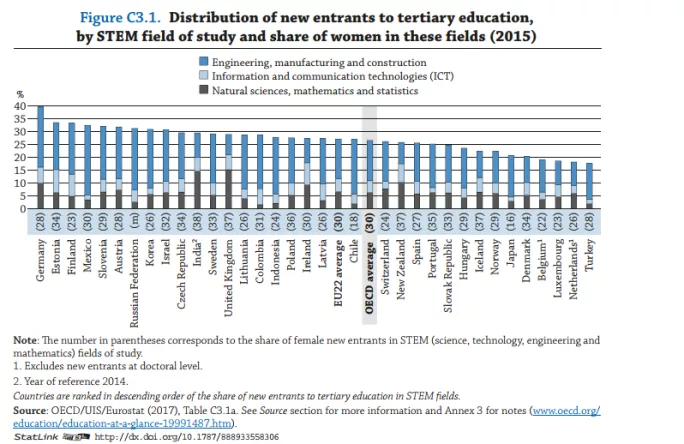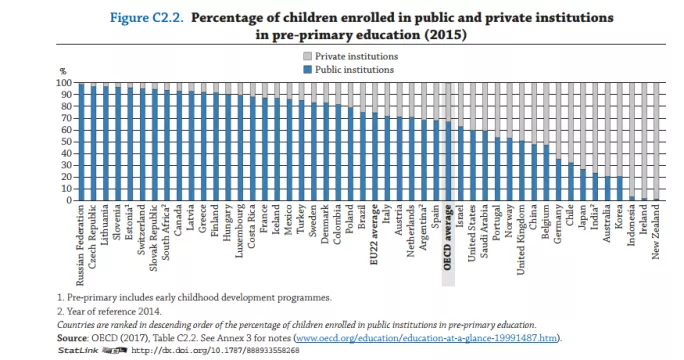State primary pupils in the UK are taught in some of the largest classes among developed nations, a new report from the Organisation for Economic Co-operation and Development (OECD) revealed today.
The organisation’s Education at a Glance 2017 report shows that there were 27 pupils on average in state primary schools in the UK - compared to 21 on average in state schools in developed countries. In contrast, primary school pupils in independent schools in the UK were taught in classes averaging 14 pupils, Education at a Glance showed.
The UK is also unusual in having larger classes on average in primary schools than in secondary schools. In UK state secondaries, the average class size was 26, compared to an OECD average of 21.
Other findings from the Education at a Glance report include:
- The UK has the largest proportion of young primary teachers (31 per cent under the age of 30) of all 35 countries with available data. By contrast, in Italy and Portugal, only 1 per cent of primary teachers are in that age group.
- In the period between 2010 and 2015, the annual time teachers spent in front of the class in England saw an increase from 684 to 942 hours at primary level.
- Of the OECD countries, the UK spends the highest proportion of its gross domestic production (6.6 per cent) on education - the OECD average is 5.2 per cent.
- Teachers’ pay in England and Scotland was worth less in real terms in 2015 than in 2005. By 2015, for teachers with typical qualifications and 15 years’ experience, salaries were worth 12 per cent less in England and six per cent less in Scotland than in 2005.
- Secondary students aged 15-19 years old are less likely to follow vocational programmes in the UK than elsewhere. In the UK, 33 per cent of students were enrolled in such programmes, compared to the OECD average of 43 per cent.
- But sixth formers in the UK are more likely to go on to study Stem subjects at university. The report found that 15 per cent of students starting higher education in 2015 chose sciences, maths and statistics programmes - the highest rate among OECD countries. The OECD average of students starting degrees in these subjects was 6 per cent.
- Early education in England is universal from the age of 3 in the UK, but children are more likely to attend private institutions (49 per cent) than in the OECD average (33 per cent) and early years education relies more heavily on private funding, with less than half of the money (47 per cent) spent on early years coming from public funds compared to an OECD average of 82 per cent.
Want to keep up with the latest education news and opinion? Follow Tes on Twitter and like Tes on Facebook






